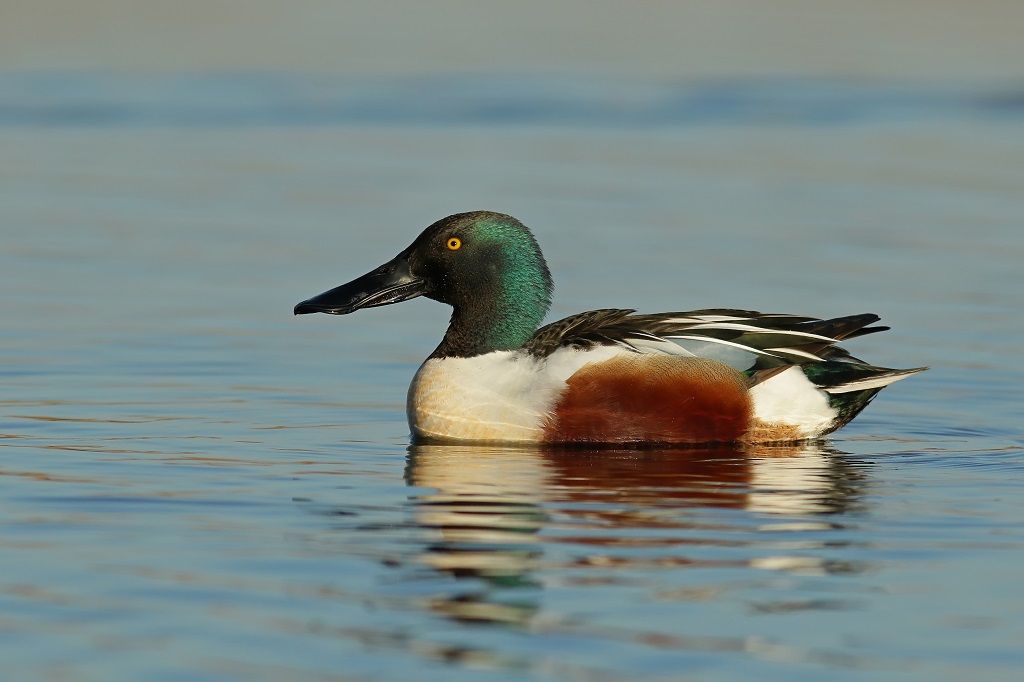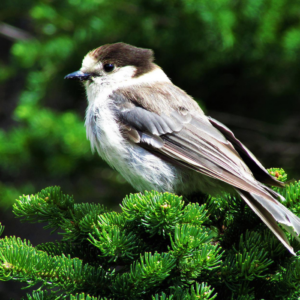Get To Know This Year’s Featured World Migratory Bird Day Species: Northern Shoveler

Vital Signs
- Common name: Northern Shoveler
- Latin name: Spatula clypeata
- Range: They migrate to the southern United States and Mexico for the Winter. In late March they depart and return to their breeding grounds spanning the southern and western halves of Canada.4
- Average Lifespan: 8 years
- Size: 44-51 cm in length with a wingspan of approximately 69-84 cm, typically weighs 400-820 g2
- Population estimate: 1,000,000 to 5,000,000 in Canada1
The Facts
The Northern Shoveler is a medium-sized duck that spends most of its time in or around wetlands. Male Northern Shovelers are more colourful, sporting a dark green head and having a mix of white, reddish-brown, and blue along their body. Female Northern Shovelers in their case are mottled with brown spots and white accents on their feathers.2
When breeding, the Northern Shoveler will usually make their nest close to water in an area of short grass. The female usually lays a clutch of 9 to 12 eggs with an incubation period of 21 to 27 days. Offspring typically stay close to the mother under the cover of vegetation and are capable of flight around 52 to 60 days after hatching.3
The Northern Shoveler’s diet varies depending on the season. During winter it mainly consists of mostly seeds and aquatic plants, while during the summer they enjoy eating insects, mollusks, crustaceans, and even small fish.3
The Story
The Northern Shoveler is considered to be a species at low risk of becoming endangered. Their numbers have been steadily increasing since the 1990s following a period of drought earlier in the 1980s that had reduced their numbers. The Northern Shoveler is also commonly hunted in southern Canada and in the United States. Despite their growth in population, there has fortunately still been a relatively consistent limit on the number of individuals that can be hunted.1
What you can do
Despite the fact that their numbers are currently increasing, the Northern Shoveler faces many of the same risks that are affecting other water loving birds. Habitat loss and an increase in droughts are just some of the many risks these birds could face in the near future. The Northern Shoveler has been identified as a priority for conservation and stewardship strategies in Canada due to their importance for biodiversity and their impact on the ecosystem.1
With that being said, advocating for the conservation of wetlands in Canada, and the advocation for the conservation of nature, in general, is a great way to support the Northern Shoveler.
You can also get involved with a local Bird Team in your community to work towards becoming Bird Friendly City Certified or host and participate in an upcoming World Migratory Bird Day event near you!
Sources:
1 Canadian Wildlife Service Waterfowl Committee. 2015. Northern Shoveler (Spatula clypeata). https://wildlife-species.canada.ca/bird-status/oiseau-bird-eng.aspx?sY=2019&sL=e&sM=a&sB=NSHO#uBCRSid
2 The Cornell Lab. All About Birds, Northern Shoveler. https://www.allaboutbirds.org/guide/Northern_Shoveler/overview
3 Audubon, 2019. Guide to North American Birds, Northern Shoveler. https://www.audubon.org/field-guide/bird/northern-shoveler
4 Ducks Unlimited Canada. Wetland Waterfowl and Wildlife Identification, Northern Shoveler. https://www.ducks.ca/species/northern-shoveler/
This project was undertaken with the financial support of the Government of Canada through the federal Department of Environment and Climate Change.
Ce projet a été réalisé avec l’appui financier du gouvernement du Canada agissant par l’entremise du ministère fédéral de l’Environnement et du Changement climatique.




